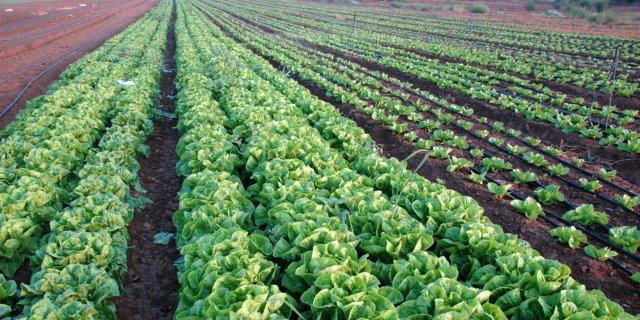Dec 29, 2016Cool-season vegetable rotation effective practice
Issues with weeds, insects and disease make certified organic production of vegetables challenging in the southeastern United States. Maintaining and building soil organic carbon in midscale organic production systems can also be difficult due to the warm, moist conditions that promote decomposition. The authors of a new study in HortTechnology say that cool-season cash crops paired with warm-season cover crops may help alleviate these concerns for organic production.
The researchers called crop rotation one of the “bedrocks” of organic agriculture in terms of managing soil fertility and soilborne pests, citing previous studies showing that crop rotations and cover crops diminished disease severity and incidence.
“Current organic vegetable production studies tend to focus only on one crop,” explained George Boyhan, lead author of the report. “The purpose of this project was to take a systems approach to evaluate two different crop rotations that focused on cool-season cash crops and included cover crops to meet these multiple objectives and produce high-value certified organic vegetables.”
The research was conducted on certified organic land at the University of Georgia Durham Horticulture Farm in Watkinsville. The experiment consisted of two three-year rotations: each entry point for a rotation was grown every year (six treatments consisting of three entry points for each of two rotations). In the first rotation, cool-season cash crops included onion, strawberry, and potato rotated with green bean, oats/austrian winter pea, southernpea, and sunn hemp. In the second rotation, onion, broccoli, lettuce, and carrot were rotated with millet, sunn hemp, egyptian wheat/iron clay pea, and sorghum x sudangrass/iron clay pea.
By the end of the study, onion, broccoli, and lettuce had yields comparable to or greater than conventional vegetable yields. Onion yields in both rotations were at least 80% of average yields in Georgia, while lettuce yields were at least double the average yields in Georgia and comparable to national averages in the second and third years of the study. Broccoli yields in the first year were substantially lower than average Georgia yields, but were comparable to average yields in the second year.
Potato yields, although lower than average yields in Georgia, increased each year of the study.
Strawberry, carrot, green bean, and southern pea crops did not fare as well. Strawberry yields in the rotations were lower than Georgia averages in all three years with a trend of lower yields over the course of the study. Carrot yields were less than half of average yields for Georgia. Green bean yields were half of average Georgia yields in the second year and were comparable to average yields in the third year.
“As expected from what is observed in cool-season organic vegetable production in Georgia, disease pressure was low,” the authors said. They said that the experiments indicate that midscale certified organic production can reach reasonable yields with rotations of organic cool-season vegetables using cover crops in the southeastern United States, and also recommended longer-term studies to assess soil management strategies.
— George E. Boyhan, Julia W. Gaskin, Elizabeth L. Little, Esendugue G. Fonsah, and Suzanne P. Stone, University of Georgia















